How to grow the alien-looking babaco (or champagne fruit) in New Zealand
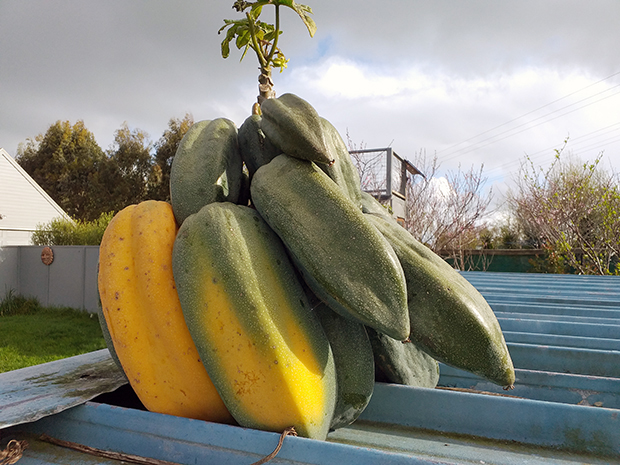
It’s a highly nutritious, star-shaped melon with a pineapple, pawpaw, banana and strawberry-like tang – and odds are, you’ve never heard of it.
Words: Nadene Hall Additional images: Colin Gover
Colin and Joy Gover’s hothouses are unconventional, but the alien-looking fruit popping out the top takes them into the realm of the really weird. The long-time teachers built them out of old windows from a condemned school building. Colin used them as walls that hold up a tin roof, allowing them to grow subtropicals on their block on the South Head peninsula, north-west of Auckland.
The rogue melons escaping out the top are the rare babaco Carica pentagona or Vasconcellea × heilbornii hybrid papaya from Ecuador, also known as ‘champagne fruit’ for their effervescent, tangy taste. They’re thriving in the warm, sheltered conditions.
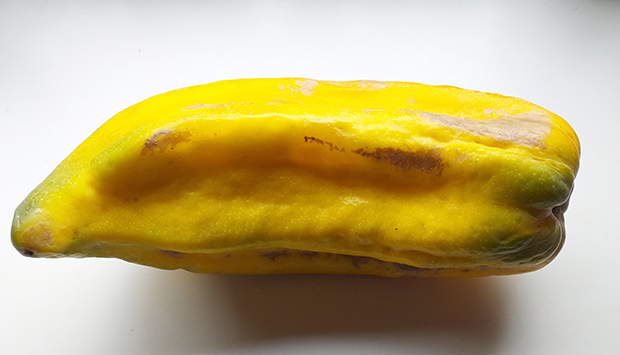
“We’ve got eight – four in each hothouse,” says Colin. “We planted one in each corner to see how they’d go and they grew up to the roof, then curled over, but one found a hole, popped out the top and this year it sprouted all these babacos. We thought, ‘We’ve got to leave this here – it looks so good.’”
A 1983 report into the commercial viability of babacos in New Zealand found Northland, Auckland and the Bay of Plenty were potential growing areas due to the lower frost risk, good summer temperatures and humidity, but permaculture gardeners Olmec and Melisa Sinclair of Blockhill grow theirs in a plastic house in Cheviot, north of Christchurch.
However, issues with root rot from overwatering and too much nitrogen, and babacos’ soft, edible skin that can’t handle the handling and storage required to get them to market mean they’re not a viable proposition for sale.
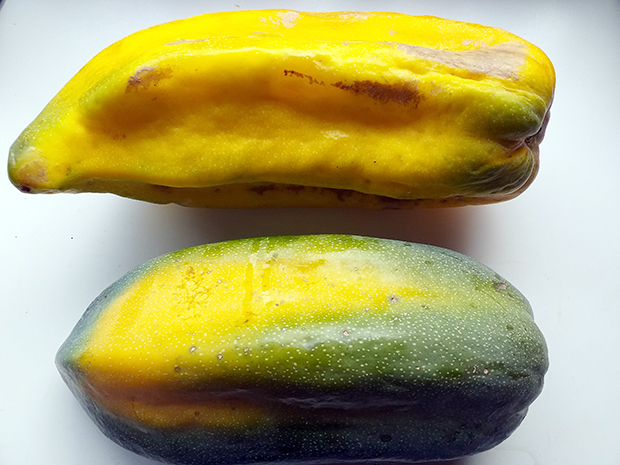
Babacos make a highly nutritious fruit for home gardeners, though. They contain three times the amount of papain as ordinary papaya (papain being an enzyme that helps the body digest protein and is responsible for the champagne tang) and a 100g slice has the same amount of vitamin C as an orange.
The plants live for five to eight years and produce 20-30 very juicy fruit per year, although some people have found they can produce 50-plus if they’re really happy. The average fruit is 20-30cm long, about 10cm round, and can weigh anywhere from 500g to 2kg.
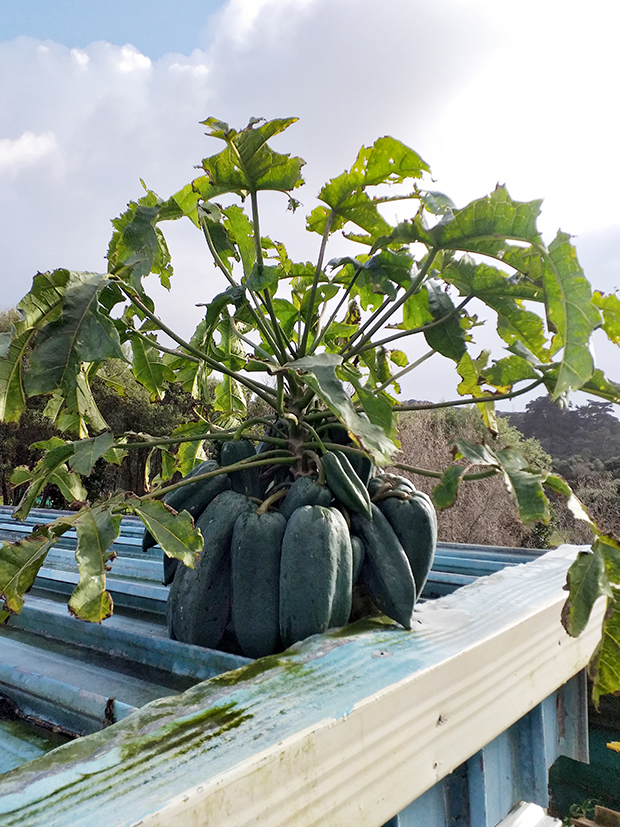
Nurserywoman Claire Leighton, formerly of Northland nursery Subtropica, says a hothouse is a good environment for them, but not essential if you have the right climate.
“I struggled a bit to grow babaco well in our heavy soil. Where I’ve planted it in good free-draining soil in raised beds, it’s done quite well, but I think it’d do better with deeper soil and more shelter. It can withstand some cold, but won’t do well if it’s cold and wet.”
A babaco grower must be patient. The tree is fast-growing, but the fruit takes about a year to form, then four to five months to turn from dark green to bright yellow. Letting it ripen on the plant is said to get you the best flavour, but the problem with that is you risk the fruit imploding when it falls off the tree, says Colin.
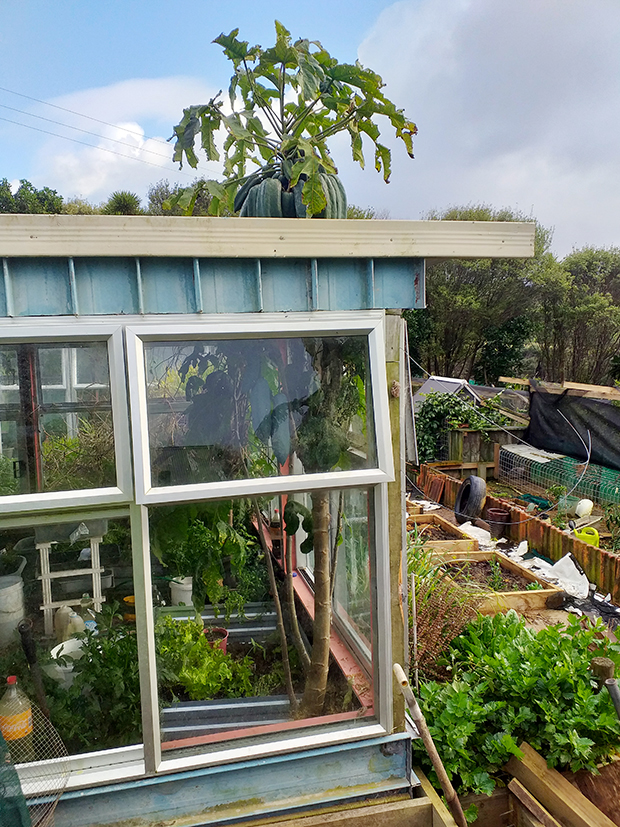
“Quite often, when we see a bit of yellow, maybe 30 percent, we’ll pick them, then let them ripen off the tree. When they get big and heavy, they tend to drop off and the fruit goes to waste.”
That’s not an option for someone who loves babaco so much he eats it every day when it’s in season. Colin whizzes up the seedless fruit – skin and all – with some soy milk or spirulina to create nutrient-filled, thirst-quenching smoothies. To him, the flavour is earthy.
“I wouldn’t say it’s sweet – it’s grainy, sort of a fruit salad taste.” To Joy, it’s delicate. “It might remind you of strawberries and papaya, like a mix of tropical fruits, maybe mango – it depends on how ripe it is. The ones [that grew through the roof] were sweeter than the ones that grew in the hot house.”
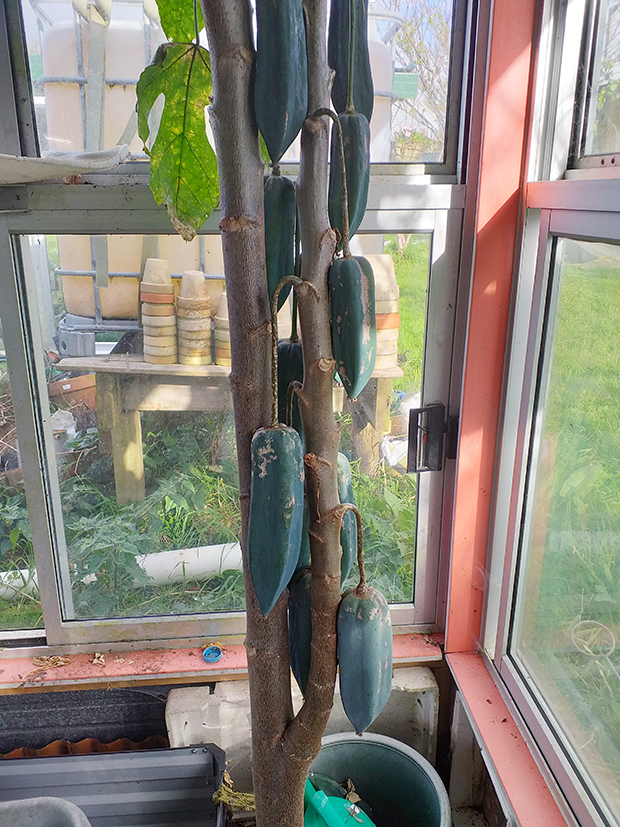
Growing conditions are essential for the best flavour, says Claire. “The flesh is sweet and juicy, not unlike tropical papaya if the babaco has ripened properly on the tree. But if the summer isn’t hot enough or long enough, it can be a bit tasteless.”
Colin prefers babaco smoothies, but it’s actually very versatile. “Years ago, Joy’s mum got a pamphlet of babaco recipes,” he says. “There’s babaco shortcake, babaco jam, spiced babaco, stewed babaco. You can cut it into long strips and dip it in soy sauce. You can make spiced babaco with sugar, cinnamon, allspice, vinegar, and cloves. You can make a sauce or serve it hot or cold with meat.”
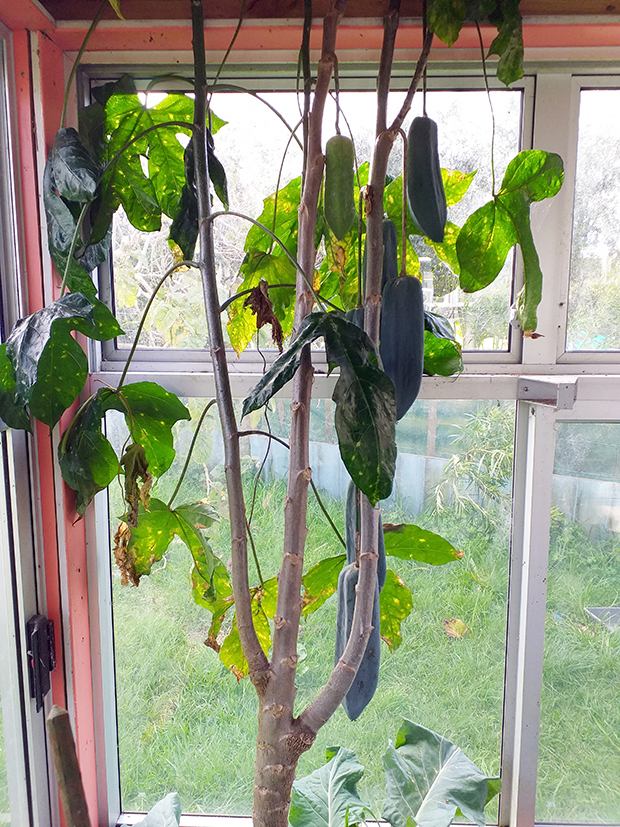
Claire likes to keep it simple. “Mainly, I eat them fresh, maybe with a splash of lime juice,” she says. “You can also grill them with brown sugar – it’s delicious.”
You can buy babaco plants at certain times of the year from Subtropica, Blockhill, on Trade Me and from Kerikeri’s Nestlebrae Exotics, or take cuttings from trees if you know someone who has one.
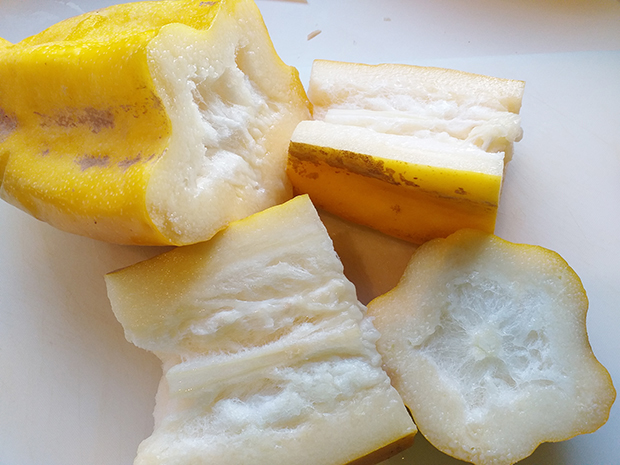
10 FAST FACTS
1. Babacos are a ‘cool subtropical’. In Ecuador, they live as an understorey plant in the jungle, so they like sheltered conditions, free-draining soil, no or very light frost, and to be warm but not too warm – at more than 30°C, trees suffer stress even if watered.
Trees also prefer dappled summer sun and full winter sun. Local growers agree that if you have yours in a tunnel house, you’ll need to cover the roof above the tree with shade cloth in summer to mimic its preferred growing conditions.
2. If you don’t have a tunnel house, grow babaco trees in large containers, moving them to a sheltered position if it’s windy, too cold or too hot.
3. Composted chicken manure is an excellent fertiliser as it’s naturally high in phosphate. Babaco trees may also need calcium, boron, zinc and other trace elements, depending on your soil.
4. Babaco plants produce only female flowers. Trees are propagated by cutting back the trunk of an adult tree to 10cm high, then removing and potting up all the shoots that sprout from the base except one. The remaining shoot will regrow to become a new tree on the old root system.
5. Fruit ripens from October to November.
6. Babacos generally don’t produce seeds, although this year, one of Colin and Joy’s had some little grape-seed sized seeds in its inner pith.
7. The fruit takes a year to develop, with smaller babacos growing first at the lowest point; the fruit gets bigger and ripens later the higher up the trunk you go. Once full size, it takes eight to 10 weeks to mature.
8. Keep fruiting trees well-watered, or the tree will drop fruit to maintain itself.
9. Some growers cut the fruit early (always use snips or the tree will ‘bleed’) and let it ripen off the tree. Others use little nets below it to prevent it from falling and splattering on the ground.
10. The fruit can last up to four weeks without chilling.
MORE HERE:
Introducing the new foodie favourite finger limes — how to grow them in New Zealand
Tips for growing citrus trees in small spaces and containers


